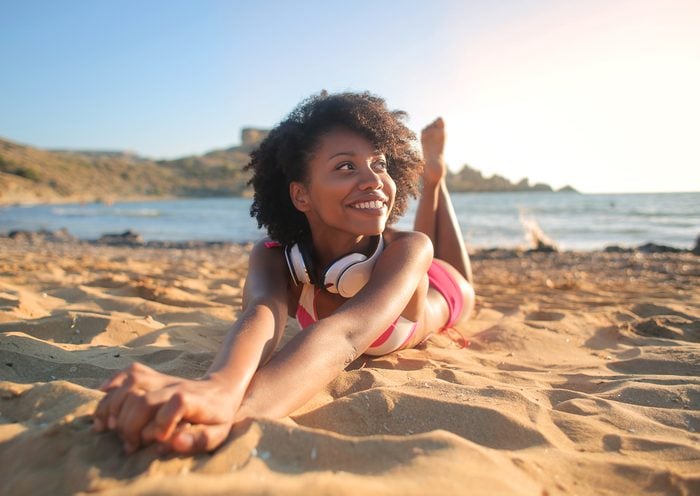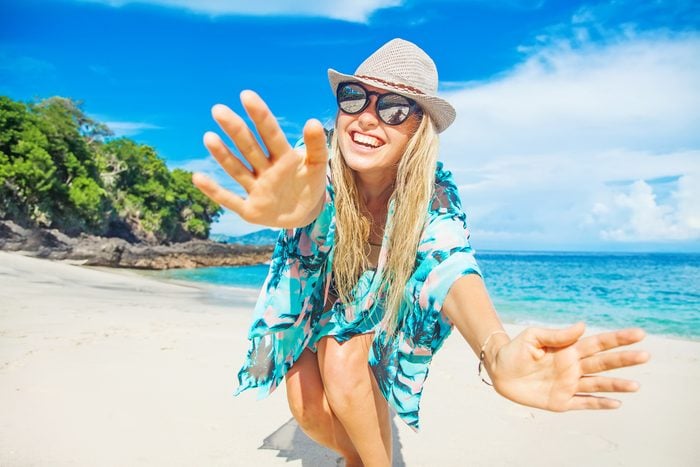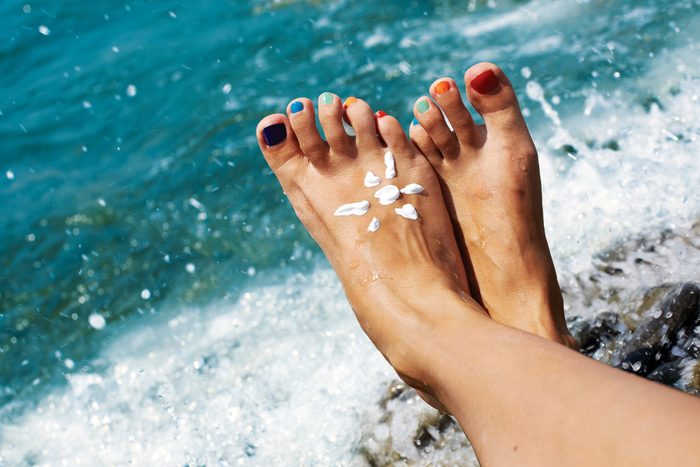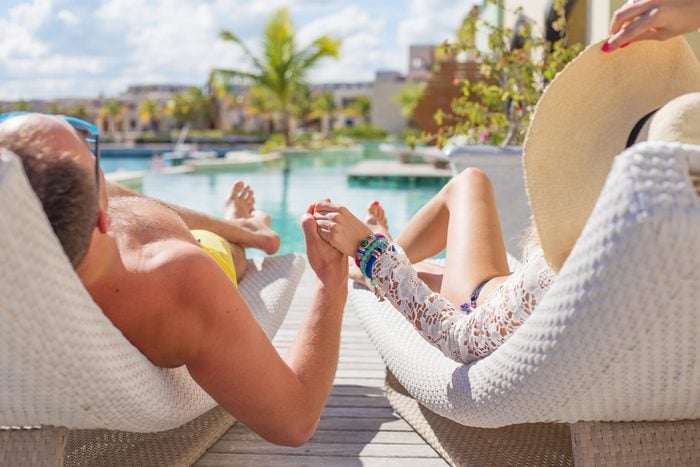
Where you forgot to apply sunscreen
You know the drill—don’t venture outdoors without a slathering of sunscreen. But have you been skimping on your application, leaving areas of your skin vulnerable to the sun’s harmful rays?
According to the Canadian Dermatology Association, skin cancer is the most commonly diagnosed cancer in Canadians, and its main cause is exposure to high amounts of UV radiation. During 2013, the Canadian Cancer Society predicts that more than 81,700 new cases of non-melanoma skin cancers (basal and squamous) will be diagnosed, and approximately 6,000 Canadians will be told that they have melanoma – the deadliest form of skin cancer that will claim 1,050 Canadian lives this year. Don’t become a statistic.
Here are nine places on the body that you most likely forgot to apply sunscreen.

1. Scalp
Wide-brimmed hats and baseball caps can easily set sail on a strong summer’s breeze, so make sure that your scalp is protected with sunscreen along the hairline and parting.
“People who have their hair parted always miss that spot,” says Dr. Julia Carroll, a Toronto-based dermatologist and director of Compass Dermatology. “And guys who are losing their hair and thinning on top, they need sunscreen there.”
Carroll understands that people might be hesitant to apply a greasy sunscreen in their hair, so she suggests using a spray sunscreen instead. Sprays penetrate through the hair and don’t usually leave an oily residue.

2. Lips
We tend to steer clear of the lips when applying sunscreen, but they shouldn’t go bare. “There are great stick products that have a waxy base that will stick to tricky areas like the lip,” says Carroll.
Sun protection for the lips is extremely important because once sun damage has occurred, this area has an increased risk of developing into an aggressive form of squamous cell carcinoma. Ombrelle and Banana Boat both make stick sunscreens that will help keep lips moist and sunburn free.

3. The backs of the knees
Sunburn in this area can be incredibly dangerous. “The most common place for melanoma on a woman is the back of the legs,” says Carroll. Don’t make the mistake of only applying sunscreen to the front of your legs. Be sure to slather a generous amount on the entire leg, front and back.
To avoid confusion about how much sunscreen to apply to your body, Carroll says to visualize a shot glass, or a golf ball – this amount should be sufficient to cover your entire body while wearing a bathing suit.

4. The sides of the face
You coat your nose, chin and forehead with UV protection, but often you’re not as diligent with the outer reaches of your face. “People don’t want to get sunscreen in their hair, so they don’t push it to the edge of their face where they should,” says Carroll. Your entire face is at risk for sun damage, so a thorough application is a must.
Carroll recommends using a broad spectrum product for your face and body that specifically covers both UVA and UVB rays. “It should be at least an SPF 30, and for extra assurance look for the Canadian Dermatology Association logo.”

5. Tops of the ears
“People totally forget their ears,” says Carroll. “A woman who has long hair applies sunscreen and thinks that she’s covered, but she doesn’t realize that she might tuck her hair behind her ear, or later she’ll be playing sports with a ball cap on. That’s why we see more skin cancers on the top of the ear.”
When you’re putting sunscreen on your face, go a little further and give some attention to your ears, too. Like the lips, the ears can be prime targets for aggressive squamous cell carcinoma.

6. Feet
Enjoying summer in your sandals, flip flops, and bare feet? Continue your sunscreen regime past the ankles; cover the whole foot (including the sole), each toe, and under the nails – malignant melanoma can be diagnosed on the soles of the feet, as well as under toenails.
“The easiest way to do this – when you jump out of the shower, cover your body with sunscreen from head to toe. Treat it like you’re moisturizing yourself and then you’re not playing a guessing game,” says Carroll.

7. Eyelids
Carroll says that dermatologists don’t commonly see skin cancers on the eyelids, but it’s still a good idea to protect this area with sunscreen in addition to wearing sunglasses and hats. “The problem with the eyelids is that chemical sunscreens can be irritating to the eyes. Around the eye area, I use stick-type sunscreens. Their waxy component doesn’t slide into the eyes if you sweat.” Carroll also says that choosing sunglasses with broad arms will provide additional protection for the sides of the eyes.

8. Underarms
Like the backs of the knees, the underarm area and its adjacent skin tucked along the chest is often left exposed. “That’s an area that I see all the time that’s been missed and it’s bright red,” says Carroll. “You need to put sunscreen around your bathing suit, or tank top straps because they can move [and leave skin unprotected].”

9. Hands
Hands are often the first location where aging becomes visually apparent, and UV exposure is typically to blame. “Whatever you’re doing to prevent aging on your face – and sunscreen is a part of that – do the same thing for your hands,” says Carroll.
Always cover the skin on the palms and backs of your hands with sunscreen, and remember to reapply it through the day. Hand washing will remove the product’s protective qualities leaving your hands exposed to sun damage and possibly, melanoma, or squamous cell carcinoma.
